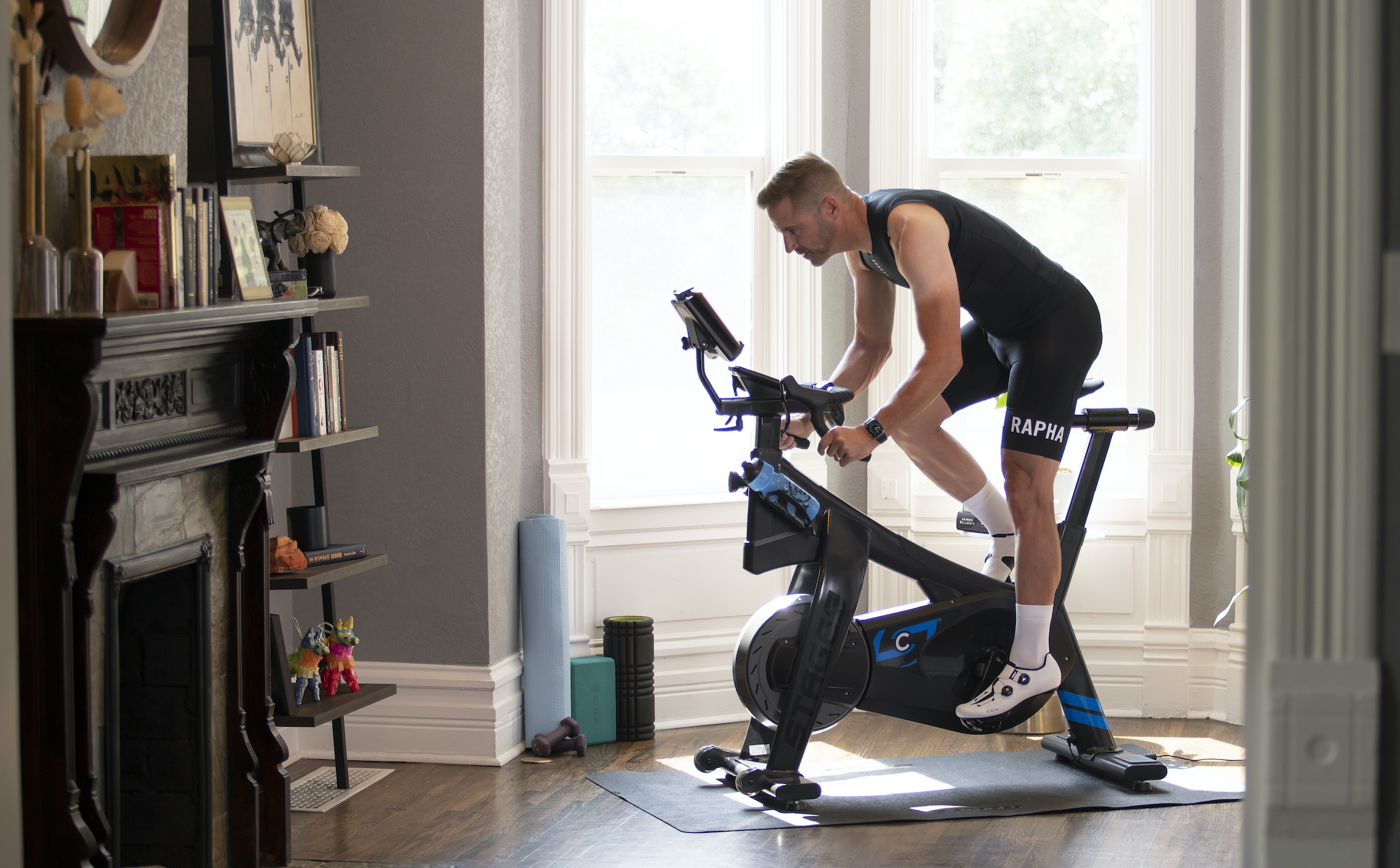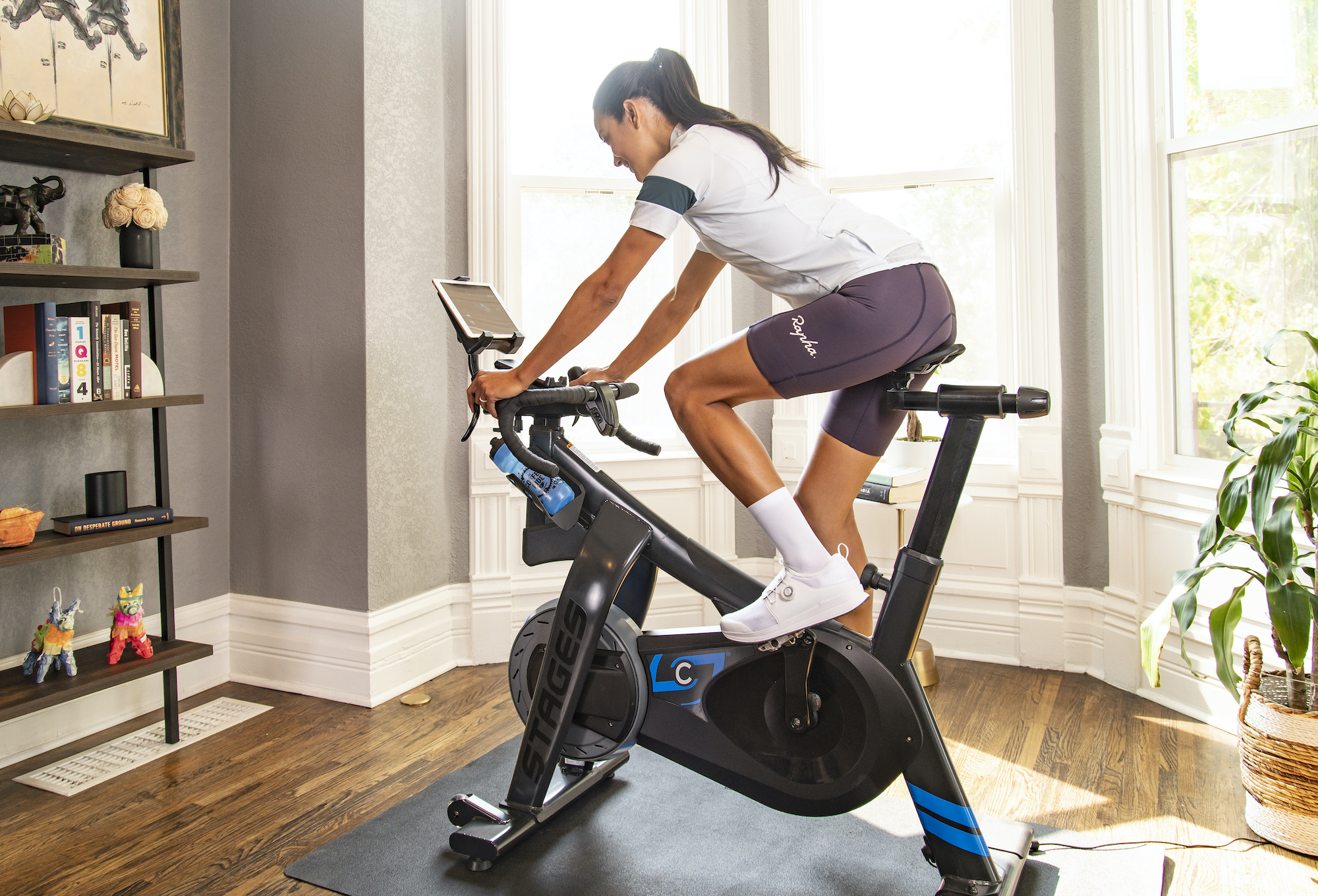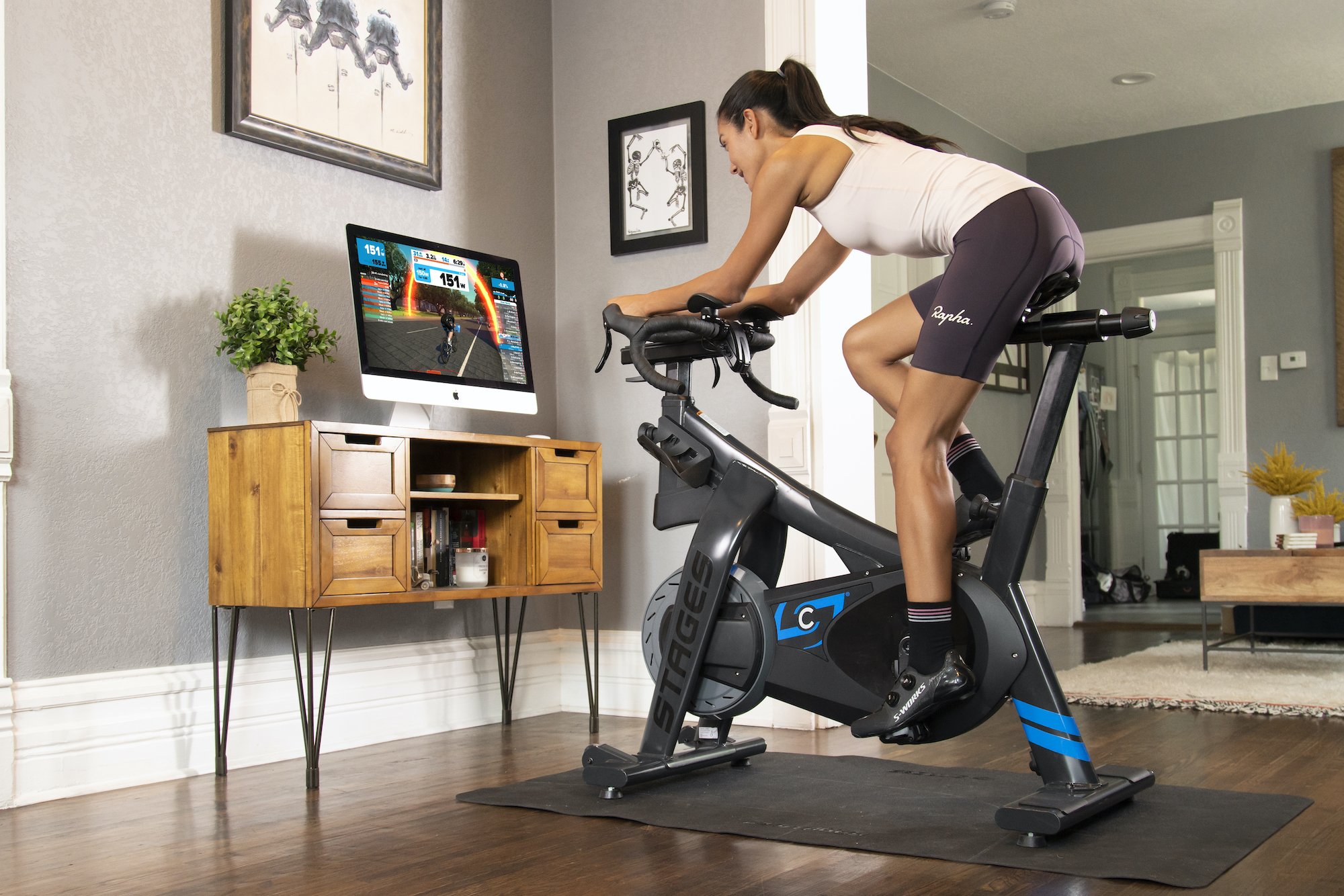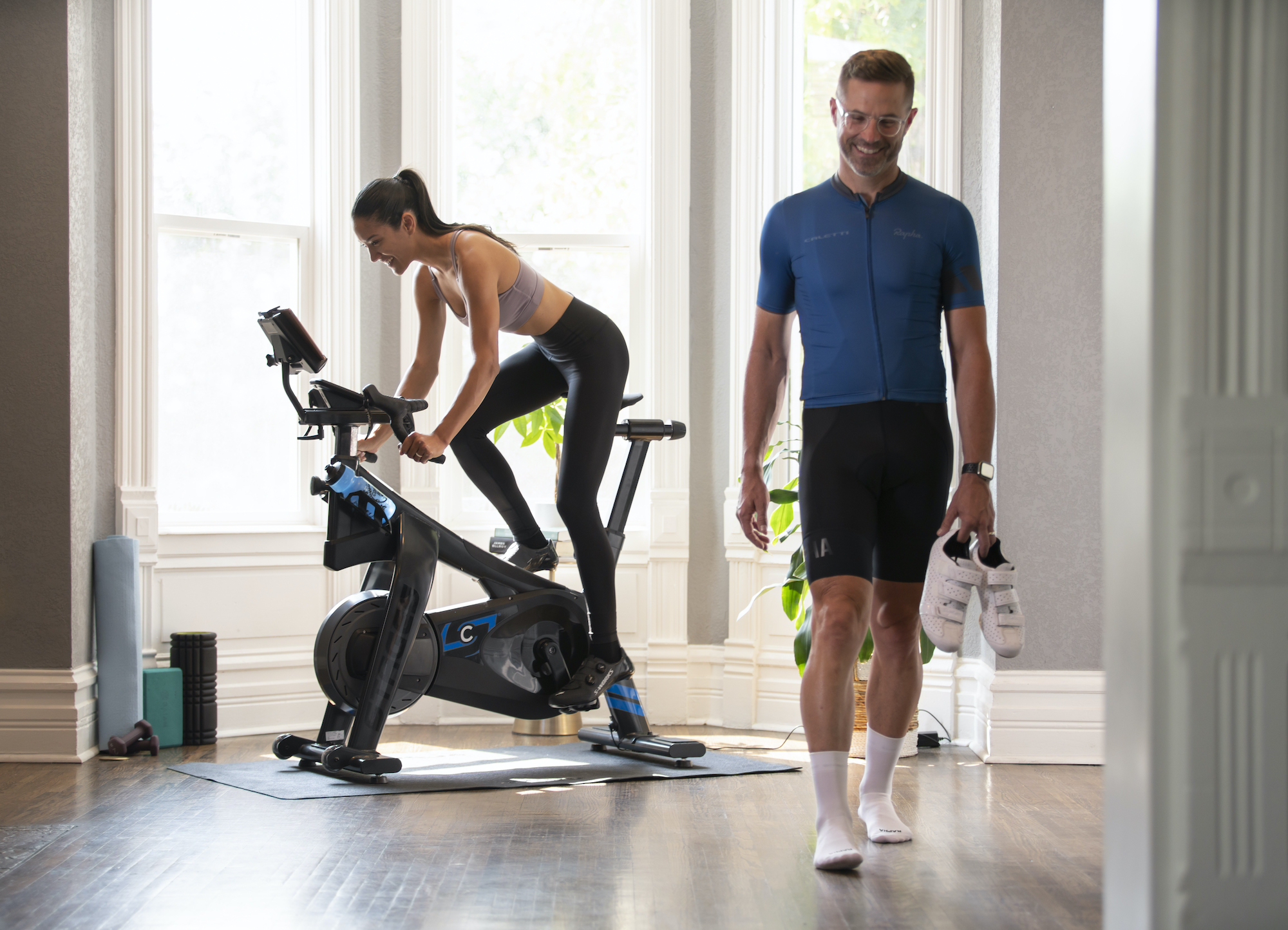Seven reasons the Stages Bike is the perfect upgrade from a smart trainer
Stages Bike SB20 gives you a better indoor riding experience


Promotional feature with Stages
With the rise of Zwift and other online training platforms, indoor riding can be as immersive and competitive as riding outdoors. Plus the weather’s better.
The standard way to experience riding indoors is to hook your bike up to a smart turbo. But if you’re hooked on the indoor riding experience, maybe it’s time to think about an upgrade to a smart bike. That’s a more readily affordable option than you might think and the Stages Bike is a real step up in lots of ways from the turbo experience.
Here’s our run-down of seven ways that the Stages Bike SB20 will up your indoor training game.
No set-up when you want to ride
Even with a direct drive smart trainer, there’s quite a bit of set-up you need to do before you can start an indoor ride. If you’ve not got it ready to go, you’re going to have to drag a heavy turbo out of the closet and hook it up to the mains.
Unless you’ve mothballed your bike for the winter, you need to take the rear wheel off, mount the bike to your turbo, mess with an oily drivetrain and set up a floormat and maybe a riser block for the front wheel. Then you’ve got to pair everything up wirelessly. You’re exhausted before you start your workout.
In contrast the Stages Bike SB20 is ready when you are. There’s no set-up, you just get on and ride. Also, your outdoor bike remains unmolested and ready to ride should the weather improve.
Less wear and tear on your components

If you’ve got an expensive road bike, you’ve probably got an expensive groupset on it too. Churning away indoors is going to add wear to your components, even if it is less than riding in the rain and grit. Plus, sweat dripping onto your drivetrain can quickly lead to corrosion, so you’re going to need to clean your bike thoroughly after your indoor ride before you put it to bed.
Swap to a Stages Bike SB20 and there’s a lot less to worry about. It uses a Gates belt drive, and stainless steel hardware so there’s less cleaning and maintenance needed, however hard your ride. It’s super-quiet too, so you won’t disturb other people as you ride Stages Bike SB20.
Less risk of damaging your bike’s frame
A tough out-the-saddle session puts a lot of strain on your road bike if you use it for training and intervals. It’s stress that bike frames aren’t designed for - in fact some brands specifically exclude damage from use in a trainer from their warranty.
With the increase in popularity of trainers, most brands now design their frames to cope with the stresses involved, but it’s something to check.
In contrast, the Stages Bike SB20 is purpose designed for the indoor rider, with a stable steel frame that’s strong enough to handle sprints and climbing efforts.

A better riding experience
OK, so you love the ride position on your road bike. But that’s easy to replicate with the Stages Bike SB20, with easy adjustment and calibrated contact points, so you can set it up exactly like your road bike.
You love your saddle and bars on your road or tri bike. No problem, Stages Bike SB20 lets you swap out the supplied bars and saddle for any standard outdoor bike components.
At 50lb, Stages Bike has the heaviest flywheel of any indoor bike. It’s paired with an electronic resistance unit, so it replicates the feel of riding on the road more closely than any other indoor bike. It will handle whatever you’ve got to throw at it, with resistance up to 2200 watts at 130 rpm.
It also comes with a smart virtual drivetrain which can be configured via the Stages Link smartphone app to work just like your outdoor bike. You can set the shift buttons on the levers to replicate any real-life groupset, whether you want 1x12 gravel bike shifting or a retro 53/39t, 11-28t 11-speed road set-up. Or you can just have sequential gearing with up to 50 speeds.
Quality build merging Stages’ power meter and exercise bike expertise
Used for five Tour de France wins, Stages power meters have proven their accuracy and reliability at WorldTour level. Those qualities carry over into the Stages Bike SB20, which uses the Stages Gen 3 dual sided power meter to give you accurate left/right power readings, so you can ride power-based routines and track your fitness as it progresses.
Stages is also a major supplier of exercise bikes to gyms, where ruggedness and minimal downtime for maintenance are paramount. It’s carried that expertise over to the Stages Bike SB20, so you’ll get an indoor bike that’s robust and reliable as well as accurate.
Easy for multiple riders to use
Whereas using a turbo, your set-up is only good for one rider unless you swap out the bike, Stages Bike SB20 is quick to adjust for different users. The calibrated bar, stem and saddle positions make it easy for multiple riders to set their own positions and get pedalling.
That means that a house of Zwifters and Peloton riders can easily share the Stages Bike SB20. You can even adjust the crank length to suit different riders.

Compatible with everything
Whatever your preferred indoor training platform, Stages Bike SB20 will interface with it. That includes not just Zwift, but Rouvy, RGT Cycling and TrainerRoad as well as a host of other apps.
The design includes built-in tablet and smartphone holders, placing them directly in front of you, so they’re easy to control and to see as you ride. It’s ANT+ and Bluetooth enabled, plus there are two integrated USB ports to make sure that the lights don’t go out during your workout. There are two in-built water bottle holders below the bars too.
As well as using cycling apps, you can control resistance manually, via a Stages bike computer or other device or select ERG mode for target power workouts.
Stages Bike SB20 is future-proof too, with functionality built-in for virtual steering and lever-based braking, so you can keep pace as Zwift and other platforms roll out new functionality.
Stages bike is available now direct from the Stages website, priced at $3,149.99 or you can pay monthly from $154 a month.

Thank you for reading 20 articles this month* Join now for unlimited access
Enjoy your first month for just £1 / $1 / €1
*Read 5 free articles per month without a subscription

Join now for unlimited access
Try first month for just £1 / $1 / €1
Get The Leadout Newsletter
The latest race content, interviews, features, reviews and expert buying guides, direct to your inbox!
Paul started writing for Cycling Weekly in 2015, covering cycling tech, new bikes and product testing. Since then, he’s reviewed hundreds of bikes and thousands of other pieces of cycling equipment for the magazine and the Cycling Weekly website.
He’s been cycling for a lot longer than that though and his travels by bike have taken him all around Europe and to California. He’s been riding gravel since before gravel bikes existed too, riding a cyclocross bike through the Chilterns and along the South Downs.
-
 Save £42 on the same tyres that Mathieu Van de Poel won Paris-Roubaix on, this Easter weekend
Save £42 on the same tyres that Mathieu Van de Poel won Paris-Roubaix on, this Easter weekendDeals Its rare that Pirelli P-Zero Race TLR RS can be found on sale, and certainly not with a whopping 25% discount, grab a pair this weekend before they go...
By Matt Ischt-Barnard
-
 "Like a second skin” - the WYN Republic CdA triathlon suit reviewed
"Like a second skin” - the WYN Republic CdA triathlon suit reviewed$700 is a substantial investment in a Tri Suit, and it is, but you’ll definitely feel fast in it
By Kristin Jenny
